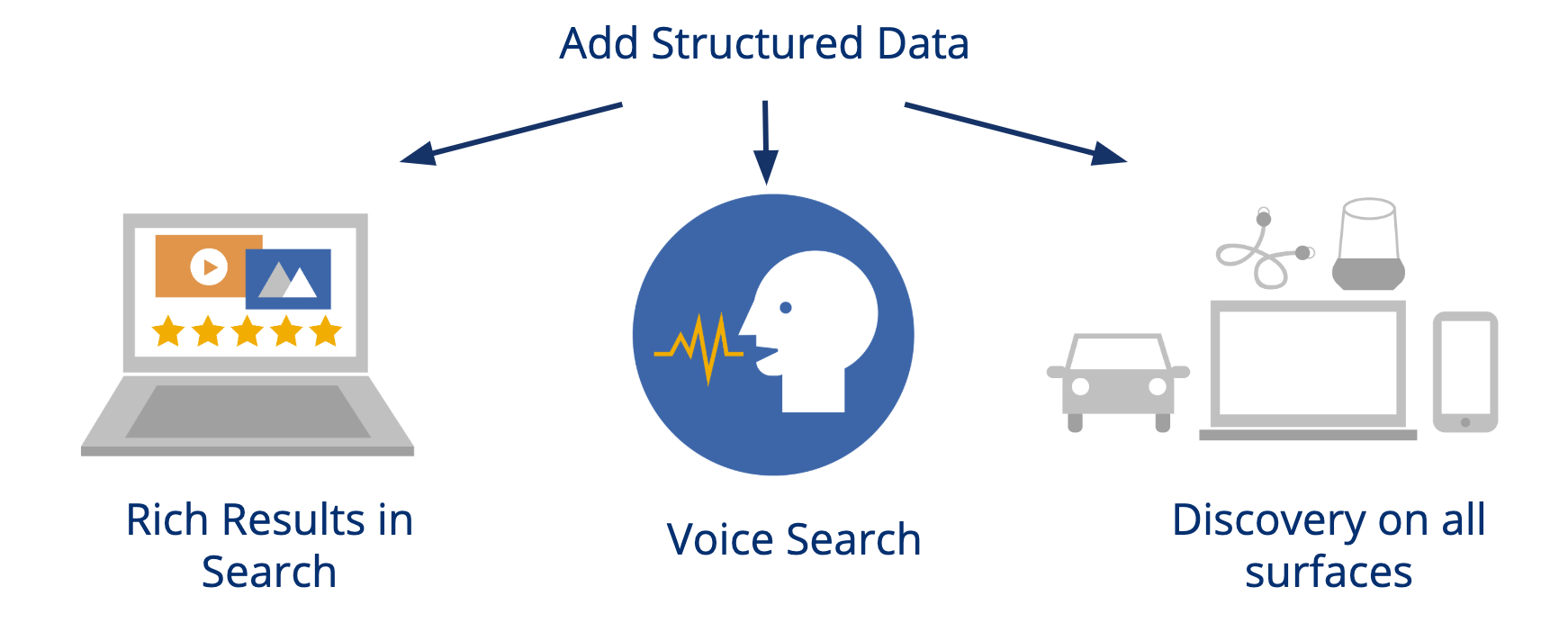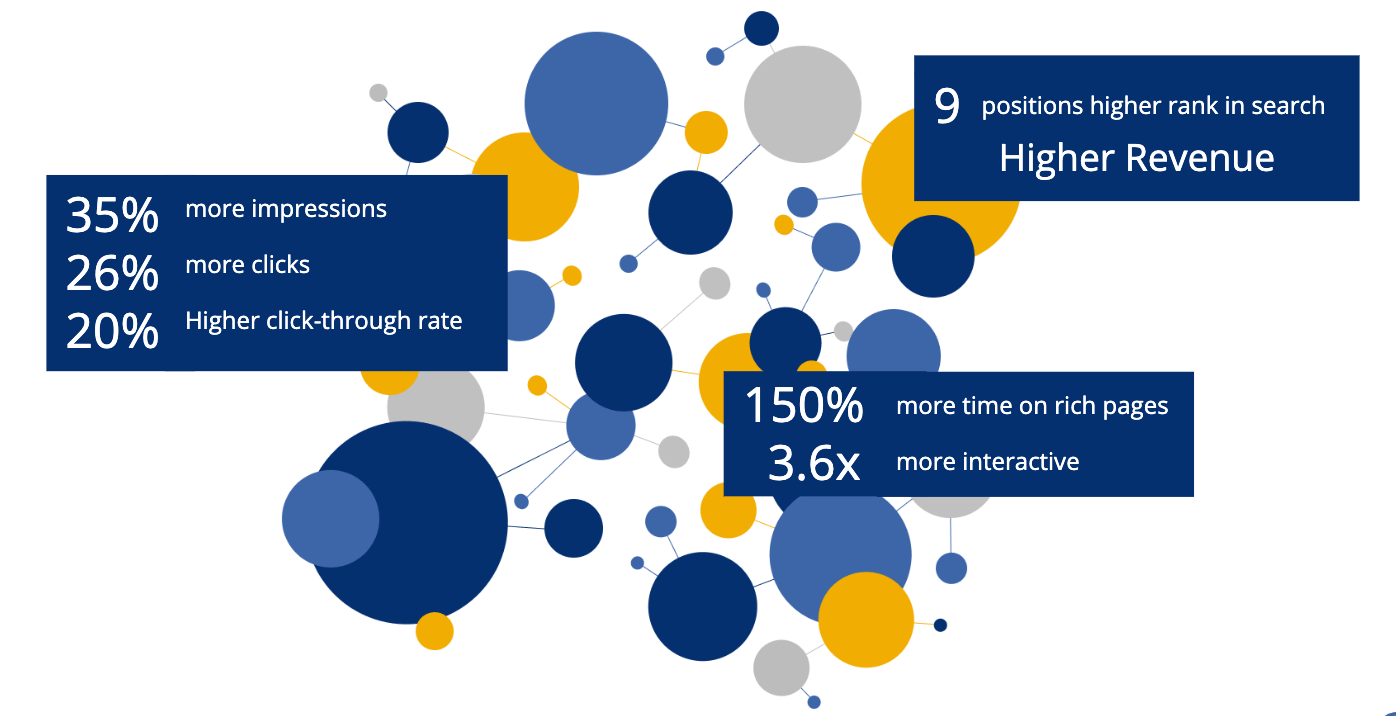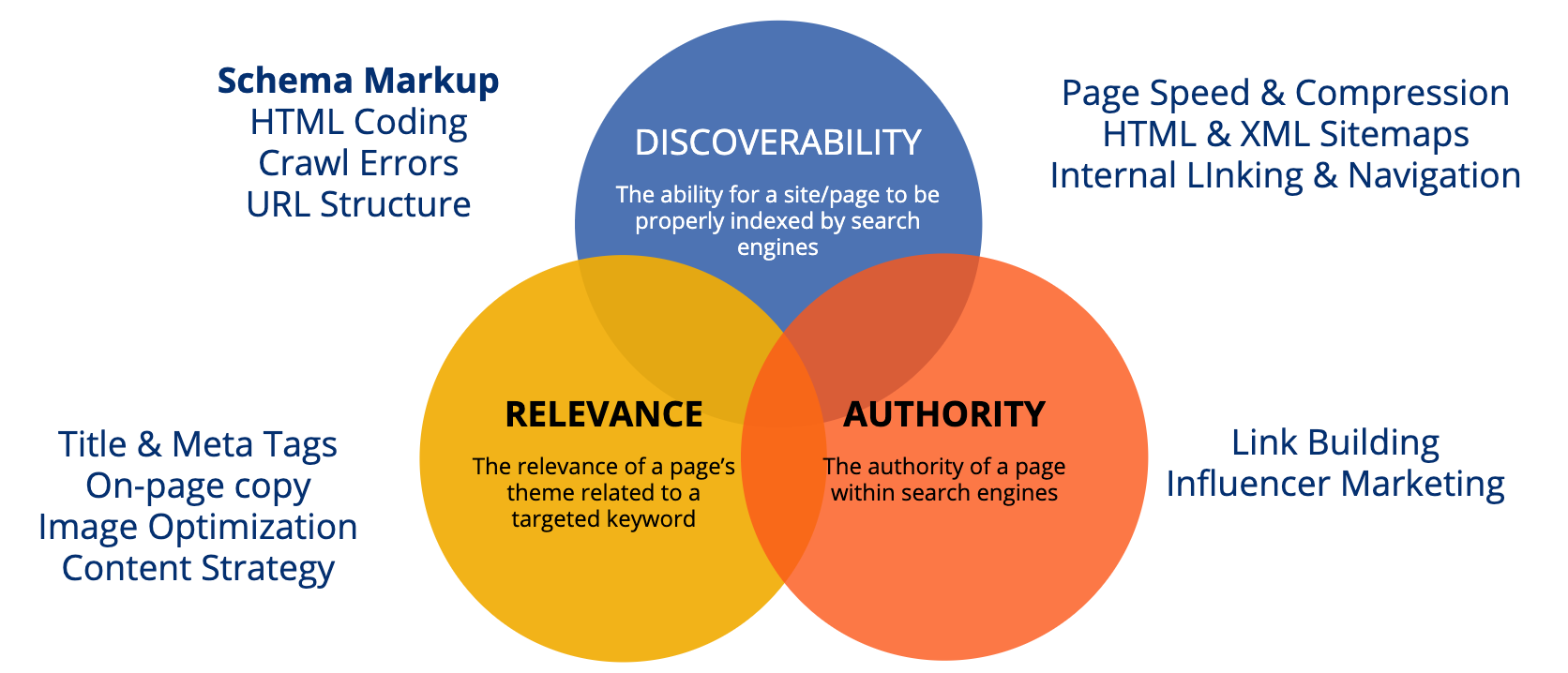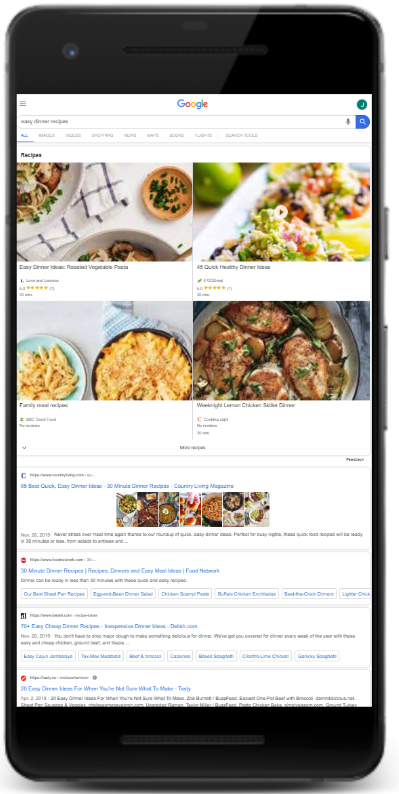In this article, we will discuss why schema markup is an integral component of your SEO strategy and how it can drive business results. We’ll cover the basics of what schema markup is and how it allows content to be understood by machines. Schema markup has been in the news a lot lately, and we’ll highlight key articles demonstrating that schema markup is taking off this year. Finally, we’ll outline how schema markup can have a measurable impact on your business and provide actionable steps you can take to get started right away.
This article is based on information presented during a webinar on January 22, 2020, co-hosted by Martha van Berkel from Schema App and Samantha Pena from Conductor.
If you want to dive in and get started on your schema markup strategy, check out this post for a more detailed how-to.
Your website makes sense to humans, but does it make sense to machines?
Google is not omniscient. As much as Google has gotten smarter and more sophisticated over the years, it is still a machine. While humans are good at inferring the meaning of your website’s content, Google has to work much harder to understand the intent behind your words. It does so by using context clues to make sense of that meaning and intent, which can get complicated.
In order to help these machines understand the content on a page, Google, Yahoo, Bing and Yandex got together in 2011 to define a vocabulary for the internet: schema.org. Schema.org contains over 800 different definitions, each with 20 or more properties to describe it. There are also specific extensions for Auto, Health, Finance and Books. Today, schema.org is a collaborative community and the de-facto standard for defining things on the web. Since schema markup is used by other platforms (like Bing, Yandex, and Pinterest), the benefits of implementing schema markup go beyond just Google and SEO.
Schema markup, also referred to as structured data, is the act of mapping the content on your website to schema.org’s vocabulary. Schema markup transforms your content into the language of machines.
Find out more about schema markup formats and why JSON-LD is preferred.
Schema Markup is Taking Off
This past year was an exciting time for schema markup. Between the spring and fall of 2019, there were seven schema.org vocabulary releases, five Google Search Console Enhancement Reports (specifically around adoption of schema markup), and four new rich result options. (See details here.)
In May 2019, Google announced that the driver for using structured data was that you could optimize once and be found across different moments and surfaces (voice, desktop, tablet, watches, cars, etc.) This was the first time Google officially shared their motivation for using structured data.
Google’s focus on structured data became even more clear during their Webmaster Conference when they said they’ll be expanding support for structured data. That’s a strong hint that we should be expecting to see the search landscape change even more in 2020.
Every year, Search Engine Journal publishes a Top 10 Important SEO Trends and this is the first time we saw schema markup break into that list. Schema App’s co-founder, Martha van Berkel, was quoted in this year’s article stating:
“Ultimately, you want to be understood, found by your customers through any channel and be well-positioned to take advantage of future features from Google and other structured data consumers like Amazon, Facebook, Microsoft, and AI Chatbots.”
Schema markup will be foundational as a new marketing data layer to ensure your content is understood, not just in B2B search or tech companies, but also in local search. Bright Local mentioned schema markup as part of their 20 predictions for 2020.
BERT & Schema Markup
The focus on schema markup from both Google and the SEO community ties into what Google calls one of the “biggest leaps forward in the history of search”—the announcement of BERT. But what is BERT and how can you optimize for it?
BERT (an acronym for Bidirectional Encoder Representations from Transformers) leverages natural language processing to better understand human queries. Dawn Anderson uses an example that explains this really well: going to the bank. BERT will look at the neighboring sentences to find out what kind of bank you are going to. Am I putting on my rubber boots as I’m going to a river bank? Or am I taking my cheque book with me because I’m going to a financial bank?
BERT is working to better understand the meaning of phrases and content. Schema markup complements this by giving explicit context to those pieces of content or page elements, ultimately driving overall understanding. This is significant to Google because it allows them to better match a searcher’s intent, and also to feed great ads so they can be more profitable.
Drive Business Results with Schema Markup
This is all great news! However, you may still be asked to justify the adoption of schema markup to your leadership or development teams. What results can you expect from implementing schema markup? And the burning question we get asked a lot: does schema markup improve rankings?
From our measurement of the impact of schema markup for Enterprise accounts, we see schema markup helping with metrics from the start of the funnel (through impressions, clicks and click through rate) through to interactions with the website, through to conversion—whatever that looks like for your company (appointments, revenue, bookings, etc.). The metrics you currently use to measure success on the web are the same metrics you’re going to use in order to measure the success with schema markup.
When it comes to rankings, Google hasn’t come out and explicitly stated that schema markup is a ranking factor. However, we have seen it positively impact rank for our clients. This makes sense as schema markup helps search engines understand the content explicitly, so it is more likely to be matched to appropriate searches.
The benefit of schema markup is further documented in Google’s own case studies. Google has reported significant improvements from organic traffic, time on site and conversion on their developers.google.com schema markup case studies.
Schema Markup: a tool in your SEO toolkit
It is important to note that while schema markup plays an important role in SEO, it is not a silver bullet. There are many different pieces to an SEO strategy, such as ensuring your technical foundation is rock-solid, that you’re creating the most helpful, trustworthy content that you can and that you’re creating the best experiences for your customers.
Schema markup is an important piece of this puzzle that can lead to your content being understood and found.
Schema Markup and Rich Results
Google currently documents 27 different structured data features (or rich results), and these features are what bring your results to life. This documentation is Google’s guidebook to help you decipher which content should be optimized with structured data, and where you may be rewarded with rich results. Rich results show up in search as images, stars, and other attractive information that can both help the user find what they’re looking for, and increase their engagement with that content.
For certain queries and content types, implementing schema is integral if you want to be visible. This is because rich results take up so much SERP real estate, especially on smaller screens. Examples include:
- Article: Adding Article schema markup to your news, blog, and sports article pages can enhance your appearance in SERP, including placement in the Top Stories carousel, host carousel, Visual stories, and rich result features such as headline text and larger-than-thumbnail images.
- Video: Schema markup is critical in not only helping Google understand what your video is about, but also in helping you rank for and show up for keywords that result in these special video search results.
- FAQ: FAQ rich results were only released in May 2019, but those that are adopting it are quickly seeing results. This allows for answers to your customers’ common questions to come directly from search.
- Recipe: Recipe schema markup helps users find your recipe content. By providing Google with information such as reviewer ratings, cooking and preparation times, and nutrition information, they can present it to users in interesting and interactive ways.
- Ratings: Valid ratings and reviews are eligible for a rich snippet that includes stars and other summary info. Many studies have shown that they improve CTR to your site.
Where to Begin?
Getting started with schema markup can feel overwhelming, especially if you’ve never implemented it before. We have a simple process for identifying top schema opportunities that will drive business results. In this article, we’ll focus on the Strategy component. More detailed information on our process can be found here.
1. Identify what content to optimize
Begin by evaluating your business and asking the following questions. The answers that come from this are the start of your schema markup strategy.
- What are the important aspects of the business?
- How do you make money?
- What information are your customers looking for?
- What is the strategic focus of the business?
Next, review the list of Google Features and see which of those apply to your business and online content. Determine if the feature is relevant to your business, if you have the content on the page to support it, or if the content could be added.
Another method of prioritizing schema opportunities is to identify pages that drive the greatest traffic or conversions. These are likely to be your money pages and are a great way to test and prove the value of schema markup implementation.
You can also look at traffic by page type or by content segment. Implementing schema for a page template instead of on an individual page basis means that you’ll get the benefits of schema at scale.
Finally, consider what special Google SERP features are the most common for the keywords that you’re tracking.
2. Identify schema.org type & properties for your content
Now that you have a list of pages where you’ll add schema markup, it’s time to identify what schema classes and properties you’ll use to tag your content. You can go to schema.org and look for the class that best describes the content of the page you want to optimize. It’s important to be as specific as possible, so get comfortable searching through the vocabulary to see what is the best fit.
Next, look at the properties available to that class. Compare this list to the content of the page in question, and see what content can be mapped to which properties.
You can listen to Martha apply this strategy to a hotel’s webpage in this webinar.
3. Check for existing schema markup
Another important component of your schema markup strategy is to determine whether or not you and your competitors have any schema markup in place. Below is a quick overview of some of our favourite tools for evaluating the current state of schema markup. Visit our “How to tell if my Schema Markup is Working” article for more information.
Structured Data Testing Tool
This is a great tool to quickly gauge if a page has schema markup. Simply enter a website URL or a code snippet and see if the tool returns any instances of schema markup.
Schema Markup Validator
Released in beta May 2021, the Schema Markup Validator officially replaced Google’s Structured Data Testing Tool (SDTT) on August 9th, 2021. It is based on the SDTT with similar functionality.
Rich Results Testing Tool
Test a page to see which rich results can be generated by the structured data it contains. This is a good preview of what you might see in Google Search Console.
Google Search Console Enhancement Report
Check out Google Search Console to see if any rich results features show up in the enhancement reports (such as Events, FAQ, and Job Postings).
Schema Markup: A Must-Do for 2020
We really believe that 2020 is the year for schema markup. Google has been very vocal about its importance in order to improve their understanding of your site’s content. The results from our clients demonstrate that implementing schema markup has a positive impact on business metrics throughout the customer life cycle. Most importantly, it helps identify Google features that are relevant to your business so that you can achieve a rich result.
Start reaching your online business goals with structured data.








